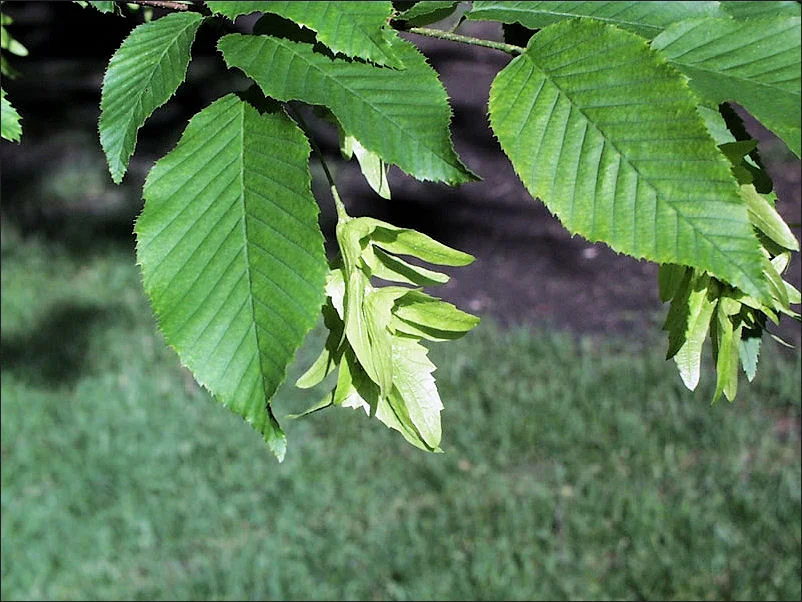Looking for a strong, reliable, attractive tree with a tidy habit? You'll love American Hornbeam. It has shiny green foliage, interesting (but not showy) flowers, good yellow fall color, and a tight oval or spreading form. As an added bonus, this tree is native to Indiana.
American Hornbeam grows naturally as a small understory tree in forests in the eastern U.S. It prefers to grow at the bottoms of hills, especially at the edge of marshes or near rivers at the top edge of the flood plain. It has many common names, and these names tell us something about the plant. Musclewood refers to the sinewy texture of the bark (see the picture below). Ironwood refers to how dense and strong the wood is. The tree isn't large enough for it's hard wood to be useful for lumber, but that doesn't stop artisans and craftsmen from using it when it's available.
Common Name: American Hornbeam, Ironwood, Blue Beech, Musclewood
Scientific Name: Carpinus caroliniana
Light: full sun to filtered shade
Size: 20-35' tall and wide
Soil: can tolerate frequently wet sites as long as the soil drains well; will tolerate clay soil on drier sites
Blooms: lime green flowers look like weird-shaped clusters of leaves in spring
Other Notes: a single-stemmed tree will have a more upright habit, and a multi-stem tree will have a more spreading habit; tree will be less dense in shade
See other plants of the month.






